Bermuda cassava pie blends sweet and savory flavors in a beloved holiday tradition. Served with turkey or ham, it’s a festive island favorite rich in taste and history.
You can’t talk about a Bermudian holiday without someone bringing up cassava pie.
If you’ve ever had it, you know it’s more than just something on the table. It’s a must-have dish that brings warmth, nostalgia, and a perfect mix of flavors to every festive gathering.
Sweet and savory in the same bite, it catches you by surprise in the best way.
You’ll see it served next to turkey, ham, or even fish, and it always holds its own.
Whether you’re making it for the first time or keeping a family recipe alive, this pie is part of the celebration.
Every bite tells a story from someone’s kitchen, handed down with care.
That’s what makes Bermuda cassava pie such a loved and expected part of the holiday spread.
Want to know more about pies made from cassava? Check out this guide on cassava pies.
Table of Contents
- Main Points
- What is Bermuda Cassava Pie?
- The History and Cultural Roots of Bermuda Cassava Pie
- What Makes Bermuda Cassava Pie Different?
- Ingredients for a Traditional Bermuda Cassava Pie Recipe
- How to Make Bermuda Cassava Pie: Step-by-Step Guide
- Tips for the Best Texture and Flavor
- When and How Bermuda Cassava Pie is Served
- Modern Twists and Variations
- Storage and Reheating Tips
- Frequently Asked Questions
- Conclusion
Main Points
- Bermuda cassava pie blends sweet and savory flavors, combining grated cassava, sugar, spices, and meat for a unique holiday dish.
- Its origins trace back to Indigenous, Portuguese, and African influences, evolving into a cultural staple at Bermudian festive gatherings.
- The pie’s dense, moist texture comes from fresh cassava, eggs, butter, and spices, balanced with savory meat layers.
- Traditionally served warm with turkey or ham at Christmas, it’s a versatile centerpiece that ties families to Bermudian heritage.
What is Bermuda Cassava Pie?
Bermuda cassava pie is a traditional holiday dish that combines sweet and savory elements in a uniquely satisfying way. Made with grated cassava, eggs, butter, sugar, and warm spices like nutmeg and cinnamon, the pie is layered with slices of chicken, ham, or both, creating a rich, custard-like base with a hearty, meaty center.
It’s baked until golden brown and firm, offering a dense but tender texture.
Typically served alongside turkey or ham at Christmas and Easter meals, Bermuda cassava pie is more than just food; it’s a cultural staple that reflects the island’s fusion of African, British, and Caribbean culinary influences.
This dish holds deep sentimental value for many Bermudians, passed down through generations as a centerpiece of festive family gatherings.
Related: Vietnamese Cassava Pie Recipe
The History and Cultural Roots of Bermuda Cassava Pie
Bermuda cassava pie is a cherished holiday dish with deep historical and cultural roots.
Its origins stem from Indigenous peoples like the Taino and Carib, who first cultivated cassava.
The arrival of Portuguese settlers and enslaved Africans in the 16th century brought new culinary influences, giving rise to what would become Bermuda’s unique version of cassava pie.
Made from grated cassava combined with sugar, spices, coconut, and sometimes meat, the pie represents a blend of cultures and traditions.
Over the generations, it evolved into a staple at festive gatherings, especially Christmas and Easter, symbolizing family unity and cultural pride.
Beyond its delicious taste, Bermuda cassava pie shows resilience, adaptation, and the blending of diverse heritages into a singular island identity.
The tradition of preparing and sharing the dish reinforces bonds between family members and across communities, making it not just a meal but a meaningful expression of Bermudian history, identity, and celebration.
Related Posts
- What is Cassava Pie Crust and How to Make it?
- Crunchy Fried Cassava Chips and How to Make Them
- 12 Manioc Foods from Latin America
- 12 Popular Cassava Recipes
- How to Prepare the Filipino Cassava Pie
- Trinidad Cassava Pie Recipe
- The Fiji Cassava Pie Recipe
What Makes Bermuda Cassava Pie Different?
Bermuda cassava pie brings a sweet and savory twist to holiday meals. It’s more than just food; it’s a tradition that mixes flavor, texture, and cultural pride in every slice.
Sweet Meets Savory in One Bite
You might not expect sugar and meat to work together, but this pie proves they do.
The sweetness of sugar and cinnamon blends with seasoned chicken or turkey, giving each forkful a balanced taste.
This mix sets it apart from other Caribbean cassava dishes that lean only one way.
You get something comforting and satisfying, whether you pair it with ham or enjoy it on its own.
It’s Not Just a Side, It’s the Star
What makes Bermuda cassava pie stand out is how it fits anywhere on the table.
The rich, dense base made from grated cassava gives it a firm, cake-like feel.
That means it holds its own whether you serve it with roasted meat or as a sweet course.
You’re not just adding a side dish, you’re bringing a centerpiece to the meal.
Texture That Keeps You Coming Back
Bite into a slice, and you’ll notice how different it feels. The texture is soft but dense, almost like a moist cake. It doesn’t fall apart, and it doesn’t feel heavy.
It’s this in-between quality that makes it perfect for large meals. It soaks up juices on your plate yet holds its flavor.
That’s why people reach for seconds during family feasts.
It Tells a Story at Every Table
When you make or serve cassava pie, you’re keeping tradition alive.
Passed down through generations, it connects people through shared memories and celebration.
It’s more than what’s in the pan. The smell in the kitchen, the gathering around the table, and the taste itself all tie you to Bermuda’s food culture.
Each slice reminds you of where it came from and where it’s going.
Ingredients for a Traditional Bermuda Cassava Pie Recipe
Bermuda cassava pie starts with a few key ingredients that work together to give the pie its rich flavor and firm, moist texture.
Each one has a role that matters.
Cassava: The Heart of the Pie
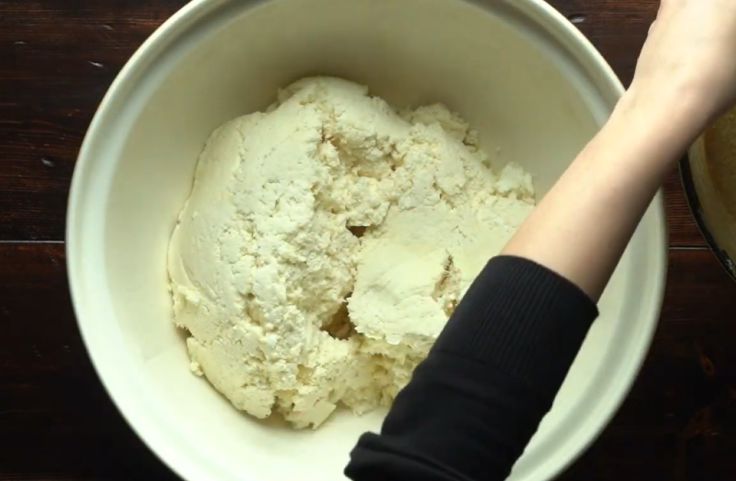
Freshly grated cassava gives this dish its base and bite. You get a slightly earthy taste that boxed or frozen versions can’t match.
The texture is smooth but holds firm when baked. It blends with the rest of the ingredients instead of overpowering them.
Using fresh cassava is what separates a true Bermudian pie from shortcuts that lose the flavor.
Eggs: The Binder That Holds It Together

Without eggs, the pie would fall apart. They hold the mix in place, helping it bake evenly while keeping it moist.
Eggs make sure each slice holds its shape but still stays soft when served. If you’re looking for the right texture, you can’t skip this part.
Butter: Richness in Every Bite

Butter adds depth and smoothness. It melts into the cassava and eggs, giving the pie a soft, buttery finish.
Don’t swap it for oil if you want that classic flavor. Use real butter for a pie that feels rich and melts in your mouth.
Sugar: Balancing the Flavors
A little sugar balances out the savory meat and warm spices. It’s not meant to make the pie sweet like dessert, but it softens the edges.
You’ll taste a gentle sweetness that plays well with the salt and spices.
Spices: Warm and Comforting

Cinnamon and nutmeg give the pie its warmth.
These two spices are common in Bermudian kitchens, and here, they work together to give the cassava base its familiar taste.
Just a pinch brings out the other flavors without taking over.
Meat: Adding Substance and Contrast
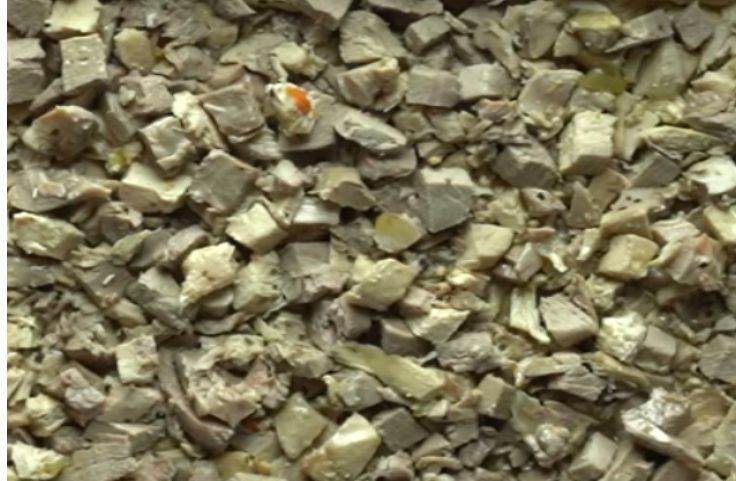
Chicken, ham, or turkey turns cassava pie into a full meal.
Use meat that’s been cooked and shredded so it blends into the pie without clumps.
The savory meat layers break up the sweetness and give the dish more bite and satisfaction.
Flavor Additions: A Personal Touch
If you want to give your pie a little something extra, you can add a splash of vanilla or some citrus zest.
These extras lift the flavor just a bit and leave a fresh aftertaste. They’re optional, but they do make the pie feel special.
How to Make Bermuda Cassava Pie: Step-by-Step Guide
Making Bermuda cassava pie takes time, but it’s worth every step. You’re building layers of sweet and savory flavor that come together in one comforting, holiday-ready dish.
Step One: Prep and Boil the Cassava
Start by peeling the cassava roots with a sharp knife. Cut them into smaller chunks so they cook evenly.
Rinse them under clean water to remove dirt and starch. Next, boil them in salted water until fork-tender.
This takes about 25 to 30 minutes. Don’t overcook them.
You want them soft but not soggy. Drain and let them cool before you mash.
Step Two: Mash and Season the Cassava

Once the cassava is cool enough to handle, mash it in a large bowl until smooth. Remove any fibrous strands or hard bits.
This is your pie base. Add melted butter, a pinch of salt, and a bit of sugar to balance the flavor.
Mix well until the texture is creamy and lump-free.
Step Three: Mix the Wet Ingredients
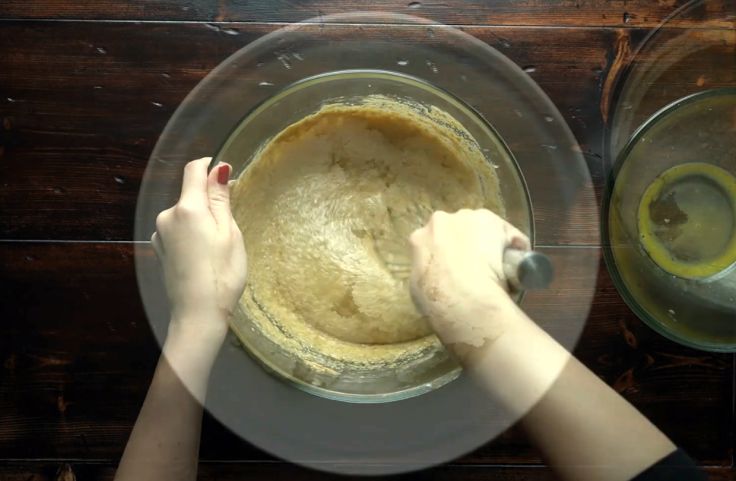
In a separate bowl, whisk together eggs, coconut milk, and vanilla extract. This mixture brings moisture and richness.
Add cinnamon and nutmeg for warmth. Pour the wet mix into the mashed cassava.
Stir until everything is evenly combined. You want a thick, smooth batter that smells like holiday comfort.
Step Four: Prepare the Savory Filling
Cook your meat of choice, chicken, ham, or salted beef are great options. Once cooked, shred or chop the meat into bite-sized pieces.
In a skillet, sauté onions, bell peppers, and garlic until soft and fragrant. Add the meat to this mix.
Season with salt, black pepper, and thyme. Let it cool before layering.
Step Five: Layer the Pie
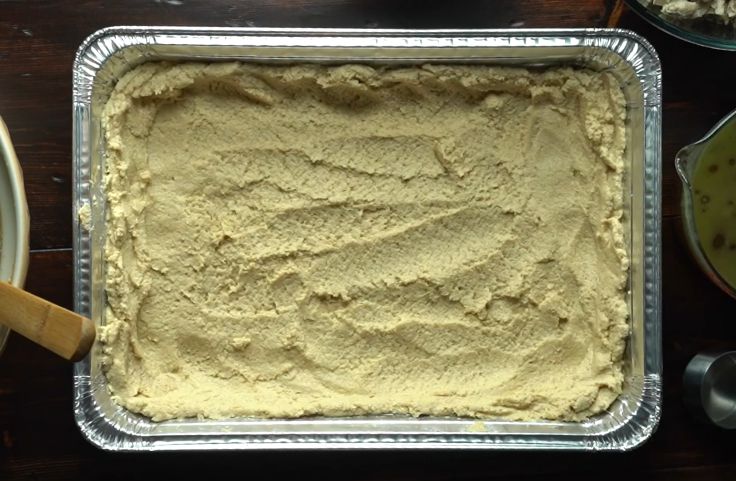
Grease a baking dish. Start with a layer of cassava mixture. Spread it evenly across the bottom.
Add a layer of the meat and vegetable filling. Then spoon another layer of cassava on top. Smooth it out gently.
If you like, repeat with thinner layers, but always end with a cassava layer on top.
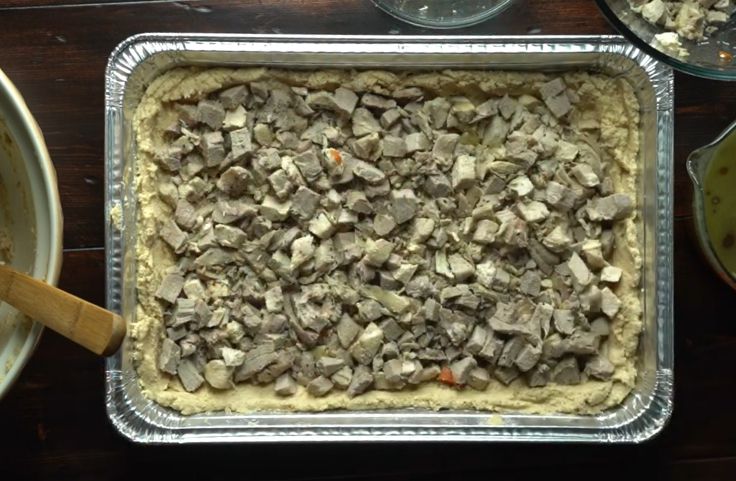
Step Six: Bake to Perfection
Preheat your oven to 350°F or 175°C. Bake the pie for 45 to 60 minutes. The top should turn golden brown and firm to the touch.
If it starts to brown too fast, cover it loosely with foil. Don’t let the edges burn. You want the center cooked through and the sides nicely set.
Step Seven: Rest and Serve
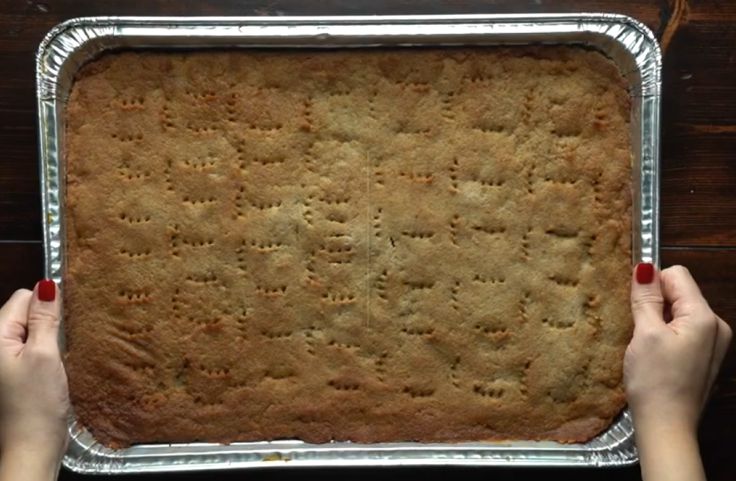
Once baked, remove the pie from the oven and let it rest for 15 to 20 minutes.
This helps the layers settle and makes slicing easier. Serve it warm. It goes well with holiday meats, roasted vegetables, or even on its own.
The blend of sweet and savory will speak for itself.
Tips for the Best Texture and Flavor
If you want your Bermuda cassava pie to come out smooth, rich, and well-balanced, every step matters, from the cassava you choose to how you bake it.
Use Fresh or Properly Thawed Cassava
Start with fresh cassava if you can. It gives better texture and holds flavor well. If you’re using frozen cassava, let it thaw fully and squeeze out any excess moisture.
Skipping this step can make your pie too wet in the middle. A dense, gummy filling is hard to fix once baked.
Get the Right Sweet and Savory Balance
The charm of Bermuda cassava pie lies in how sweet and savory come together.
A little sugar and spice in the cassava mix goes a long way. You can add grated coconut for a touch of richness.
Then layer in seasoned meat like chicken or ham to round it out. Each bite should feel even and not too heavy on either side.
Use Spices Gently
Nutmeg and cinnamon are key, but go easy. A pinch gives warmth and depth without taking over the flavor.
The goal is balance, not a dessert. Taste as you mix. If it smells just right, it probably is.
You can always add a little more, but you can’t take it out.
Add Savory Layers for More Depth
Chopped onions or scallions can bring the dish together. Sauté them lightly to soften the flavor before mixing with your meat or cassava base.
This gives your pie more complexity and keeps it from tasting flat. It also makes the dish more satisfying without needing extra salt or seasoning.
Blend the Mixture Well
Before you bake, make sure everything is mixed smoothly. The cassava, eggs, butter, and spices should come together without lumps.
If it looks too thick, a small splash of coconut milk can help loosen it.
A well-blended batter gives you a creamy texture that holds together when sliced.
Choose the Right Crust
The crust matters. A flaky, golden crust makes a great contrast to the soft cassava center.
You can go crustless, but with a buttery base, the dish feels more complete.
If you’re using a cassava crust, make sure it’s pre-baked a bit so it stays crisp under the filling.
When and How Bermuda Cassava Pie is Served
Bermuda cassava pie holds a special spot on the holiday table. You’ll find it at Christmas dinners, family brunches, and festive gatherings that center around food and connection.
Serve It with Holiday Meats
This pie shows up next to roasted turkey, baked ham, or chicken at most Christmas feasts in Bermuda.
The sweet and savory flavor of the cassava pairs well with bold meats and herb stuffing.
It balances rich dishes without fighting for attention. Slice it thick and let it hold its own alongside the mains.
Warm It Before Serving
Heat it up before placing it on the table. Warm cassava pie brings out the buttery flavor and soft texture that makes it comforting to eat.
Cold pie feels dense and muted, but a quick reheat in the oven brings it back to life.
You’ll taste the spices and coconut more clearly when it’s served warm.
Add Gravy or Sauce
A spoonful of turkey gravy or pan drippings over a slice of cassava pie creates a savory edge that brings everything together.
If you like contrast, this adds depth without overpowering the dish.
You can skip the gravy for a more dessert-like finish, but a little sauce brings out a new layer of taste.
Include It in Brunch
Bermudian families also serve cassava pie during holiday brunch.
You can plate it with scrambled eggs, sautéed greens, or baked beans.
It turns into a filling side that works beyond dinner.
Its slightly sweet base and dense texture make it easy to pair with morning meals while still feeling festive.
Make It Part of Family Traditions
More than a holiday treat, cassava pie is about sharing. Making and eating it ties you to Bermudian roots and family memories.
Whether passed down through generations or made from scratch for the first time, this pie keeps the culture alive through food.
Every bite reminds you that tradition lives on at the table.
Modern Twists and Variations
Bermuda cassava pie continues to evolve. While tradition stays at its core, you can now enjoy new ways of preparing and serving it that match your taste and lifestyle.
Try Mini Cassava Pies for Easy Servings
Instead of making one large pie, bake individual portions in muffin tins.
These mini cassava pies are easy to serve and perfect for gatherings or holiday platters.
They hold their shape well and make it easier for guests to enjoy without needing to slice.
The flavor stays the same, but the presentation feels modern and thoughtful.
Use Vegan or Vegetarian Swaps
If you’re avoiding animal products, you can still enjoy cassava pie.
Swap eggs for flaxseed meal or silken tofu to keep the filling rich and smooth.
Use coconut milk instead of dairy for a creamy texture and subtle tropical note.
These plant-based ingredients keep the pie flavorful while meeting dietary needs.
Add Sweet Layers with Fruit and Coconut
Mix in raisins or chopped dates for a touch of natural sweetness. They soften while baking and add contrast to the soft cassava.
Coconut flakes bring in a chewy texture that pairs well with the creamy base.
These additions don’t overpower the dish. They simply give it more depth.
Add Spiced Rum for a Warm Finish
A splash of spiced rum in the batter adds warmth and aroma.
It doesn’t make the pie taste like alcohol, but it adds a subtle richness that works well with cinnamon and nutmeg.
It’s a small change that makes a big difference in flavor, especially when serving at adult gatherings.
Make It Yours
You don’t need to follow every tradition to enjoy cassava pie. Add or skip what works for you.
The heart of the dish is cassava, and everything else can reflect your style, your table, and your family.
With these modern updates, you can keep the tradition alive while making it feel like your own.
Storage and Reheating Tips
Bermuda cassava pie keeps well when you store it the right way. These tips will help you hold on to both flavor and texture for days or even weeks after baking.
Store in the Fridge for Short-Term Use
If you plan to eat your cassava pie within a few days, wrap it tightly in plastic or place it in a sealed container.
This keeps the moisture in and prevents the crust from drying out.
Refrigerated pie will stay fresh for up to five days.
When you’re ready to serve again, it’s easy to bring back the soft, dense texture with proper reheating.
Freeze for Longer Storage
To freeze, let the pie cool completely, then wrap it in two layers: plastic first, then foil. This shields it from freezer burn and locks in flavor.
For convenience, cut it into individual pieces before freezing. That way, you can grab a quick serving anytime without defrosting the whole dish.
Frozen cassava pie keeps well for two to three months.
Reheat Gently to Preserve Texture
For the best results, reheat in the oven, not the microwave. Set your oven to 350°F and cover the pie with foil to prevent the top from drying out.
Heat for about 15 to 20 minutes until it’s warmed through. If frozen, thaw it overnight in the fridge before reheating.
This slow approach helps keep the center moist and the edges from turning rubbery.
Make It Feel Fresh Again
Add a little butter or a splash of coconut milk over the pie before reheating to revive flavor and softness.
You can even sprinkle a touch of cinnamon or nutmeg to refresh the aroma.
These small steps can make your leftover cassava pie feel like it just came out of the oven.
Frequently Asked Questions
What is Bermuda cassava pie made of?
It’s made with grated cassava, eggs, butter, sugar, cinnamon, nutmeg, and layered with chicken, ham, or turkey for savory depth.
Why is cassava pie a holiday tradition?
Cassava pie is a Bermudian staple at Christmas and Easter, symbolizing family unity and cultural heritage passed down through generations.
Can you make a vegan cassava pie?
Yes, use flaxseed meal or tofu for eggs and coconut milk for a creamy, plant-based version that retains rich flavor.
How do you store cassava pie?
Refrigerate for five days in a sealed container or freeze wrapped slices for up to three months, reheating gently.
Conclusion
Bermuda cassava pie is more than a dish; it’s a vibrant tradition weaving together sweet and savory flavors with deep cultural roots.
From its Indigenous origins to African and Portuguese influences, it embodies Bermuda’s diverse heritage.
Served warm at Christmas or Easter, its dense, moist texture and balanced taste make it a holiday star.
Whether layered with meat or reimagined with vegan twists, each slice carries family memories and pride.
By preparing and sharing this pie, Bermudians keep their history alive, ensuring every bite tells a story of resilience, unity, and celebration for generations to come.
References

Chimeremeze Emeh is a writer and researcher passionate about Africa’s most transformative root crop—cassava. Through his work at cassavavaluechain.com, he explores the entire cassava industry, from cultivation and processing to its diverse applications in food, health, and industrial use.
He also writes for palmoilpalm.com, where he shares his extensive experience and deep-rooted knowledge of palm oil, covering red palm oil, palm kernel oil, and refined products. His work there reflects his lifelong connection to agriculture and his commitment to promoting sustainable value chains in Africa.
Driven by curiosity and purpose, Chimeremeze aims to shed light on how cassava continues to empower communities, strengthen food systems, and link traditional farming wisdom with modern innovation.
